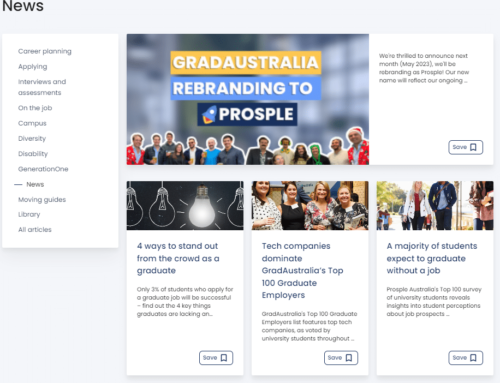With today’s job market and unemployment rates, there’s a big focus on branding oneself to be as attractive as possible to employers. But companies need to brand themselves as well—not just for customers, but to attract the best possible candidates.
We’ve already explored some of the branding mistakes and pitfalls that companies often encounter. If you want your employer branding to truly shine, here are some helpful strategies and techniques that you should keep in mind.
Create engaging content
We normally think of content marketing as a way to appeal to consumers, but it’s an important way to appeal to potential employees, as well. In fact, job postings themselves are a form of content. When you create a new posting, don’t focus entirely on what you’re looking for in a candidate; include details about the company’s benefits and culture to show why applicants should want to work for you, too.
Also read: Is Your Company Using Social Media for Talent Acquisition?
Keep your company’s blog updated regularly with photos, videos or testimonials that show how enjoyable it is to work there. Make posts on social media so that you can engage potential candidates from multiple angles, and encourage them to follow you so that they can always see your latest content.
Build a rapport with your employees
Naturally, before you can talk up how much people love working for you, you have to ensure that that’s actually the case. This starts with the basics: clear communication, staying open to feedback and treating everyone with dignity and respect.
When building rapport, it helps to commemorate special events. Birthday and holiday parties are a good place to start. Consider celebrating major milestones for the business as well. Give away prizes relevant to the business, such as custom t-shirts with a fun slogan or in-joke that employees can relate to (Underground Printing is a good place to go for these). Take plenty of fun photos to make the event memorable. You can give your employees copies of these snapshots in specialty folder frames (such as those offered by Company Folders) to help them remember the occasion. Be sure to also post them on your blog or on social media so that potential candidates can see them, too.
Encourage training and growth
Companies that offer opportunities to learn and grow are more likely to attract high-quality candidates. Be sure to offer training and advancement to the employees you already have, and make those opportunities known to potential new employees. Even if there’s no room to promote an employee who is doing well to a higher position, do what you can to offer them additional responsibilities.
Also read: Why Microlearning Should Become Part of Your Training Program
Encourage your team members to attend workshops or conferences related to their industry skills and earn qualifications that will help their career. Even just reading a couple relevant news or blog articles a week can go a long way. Make sure applicants know that you value them beyond just the work they can do for you right now; you’re also willing to invest in them for the future.
Be authentic
Spin is dead; people (particularly high-quality job candidates) are very good at detecting when they’re being pandered to. Any recruiting communications you create need to be authentic, or you’ll just end up driving those people away.
Don’t try to spin the details of your company in a way that grossly exaggerates what you actually have to offer. Any candidates attracted by that sort of rhetoric will likely be disappointed once they actually start working there—and that’s not an ideal situation for anyone. You can still accentuate your most positive qualities; just be honest and realistic about what applicants should expect.
The best way to test whether your branding and recruitment process is working is to go through it yourself. Go through each step as though you were a candidate. Evaluate the ease with which candidates can apply, the clarity of the information they receive, and the type of experience they have during an interview. You’re likely to discover problem areas where the process can be further improved.
Download our eBook on Learning and Development Trends and find out how technology enables continuous learning in organizations.
Image licensed from Depositphotos.com







Leave A Comment